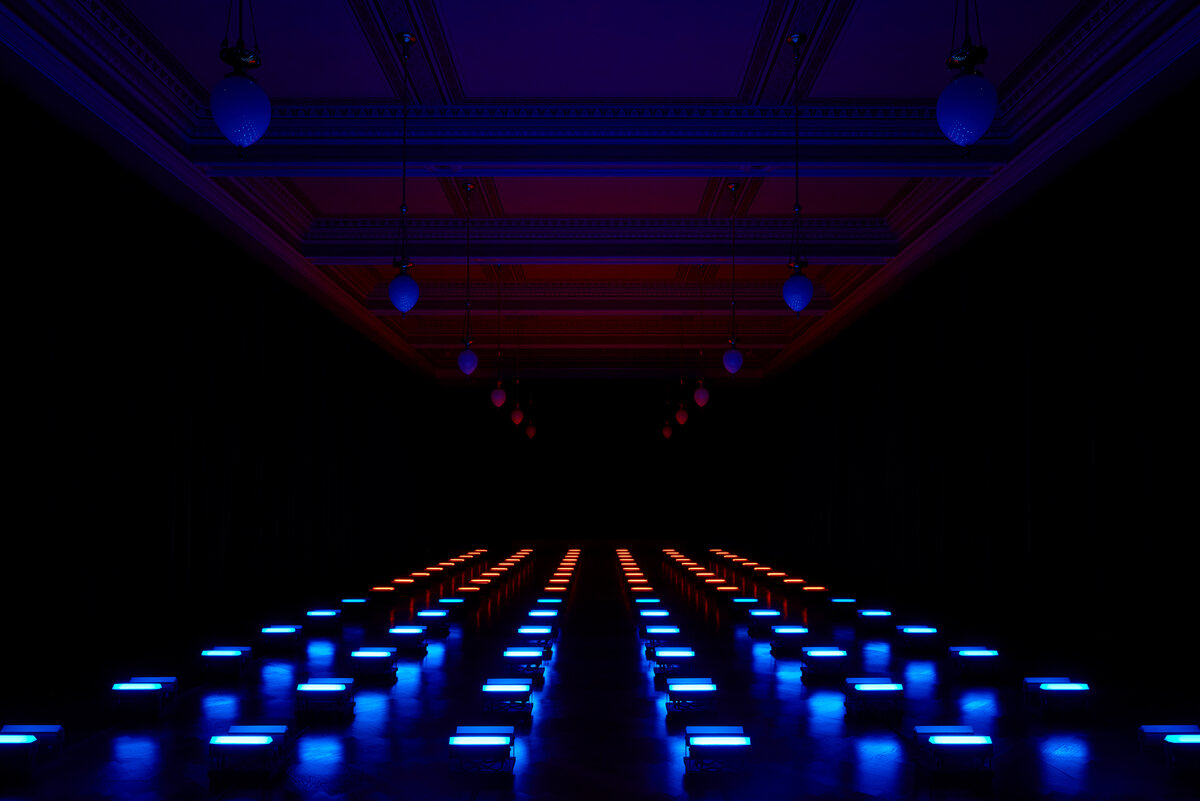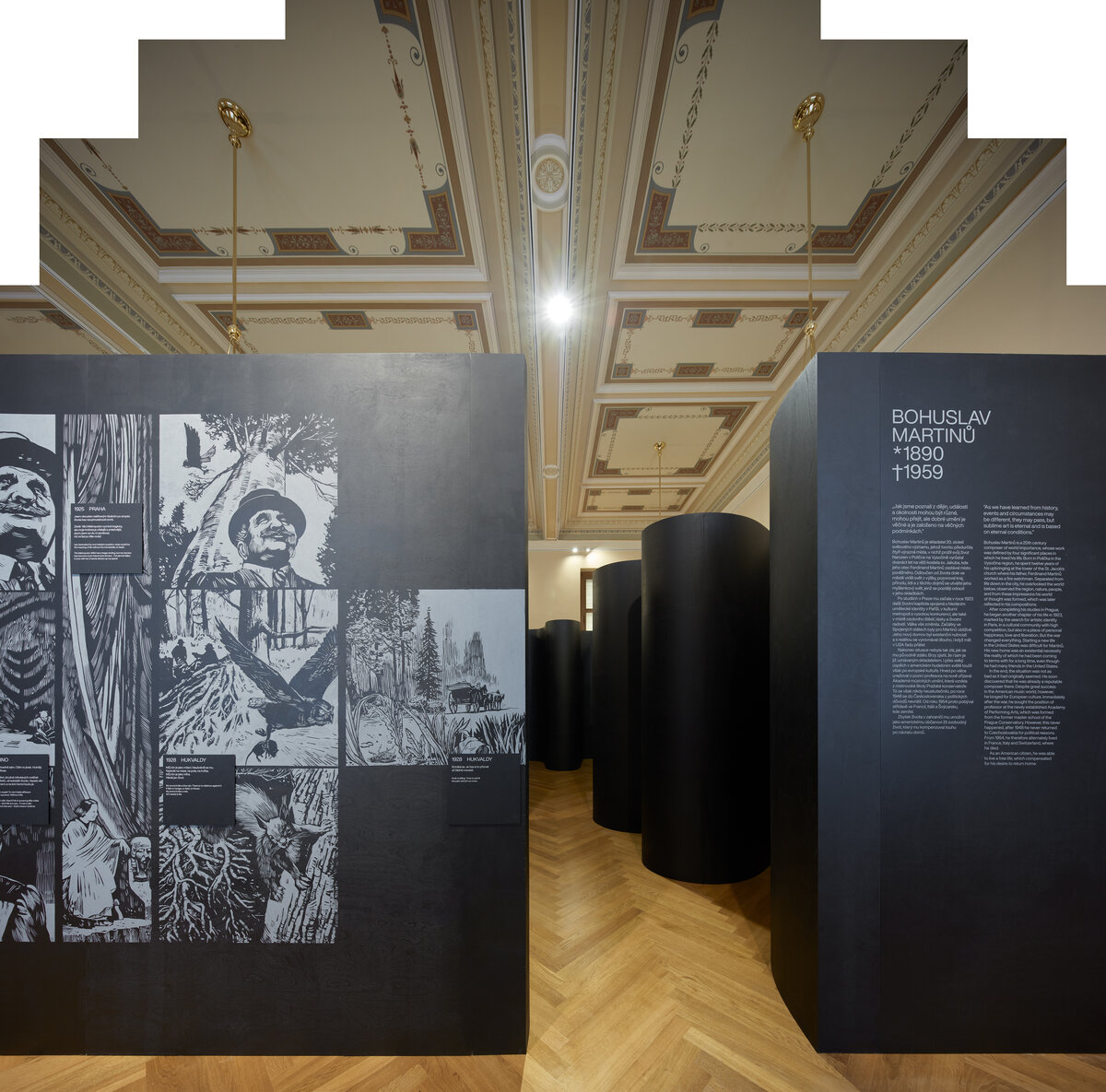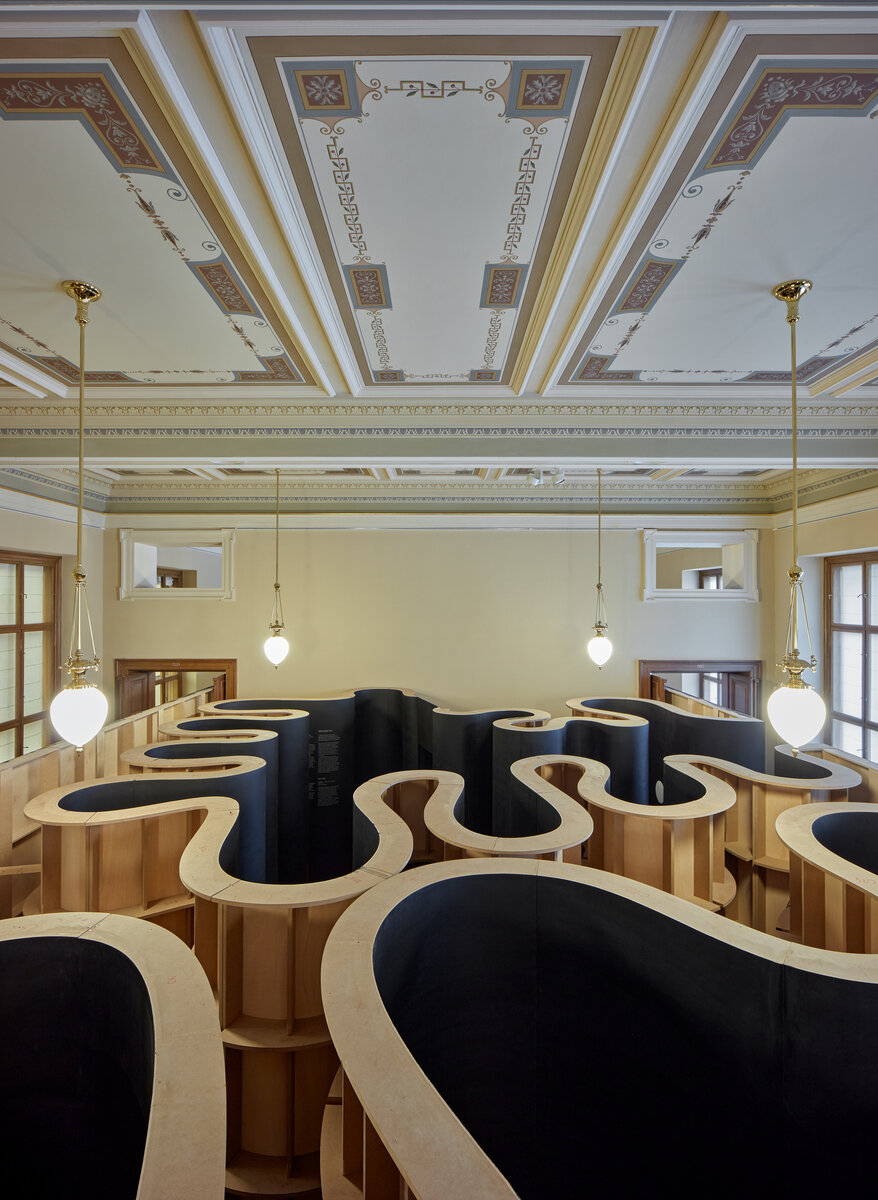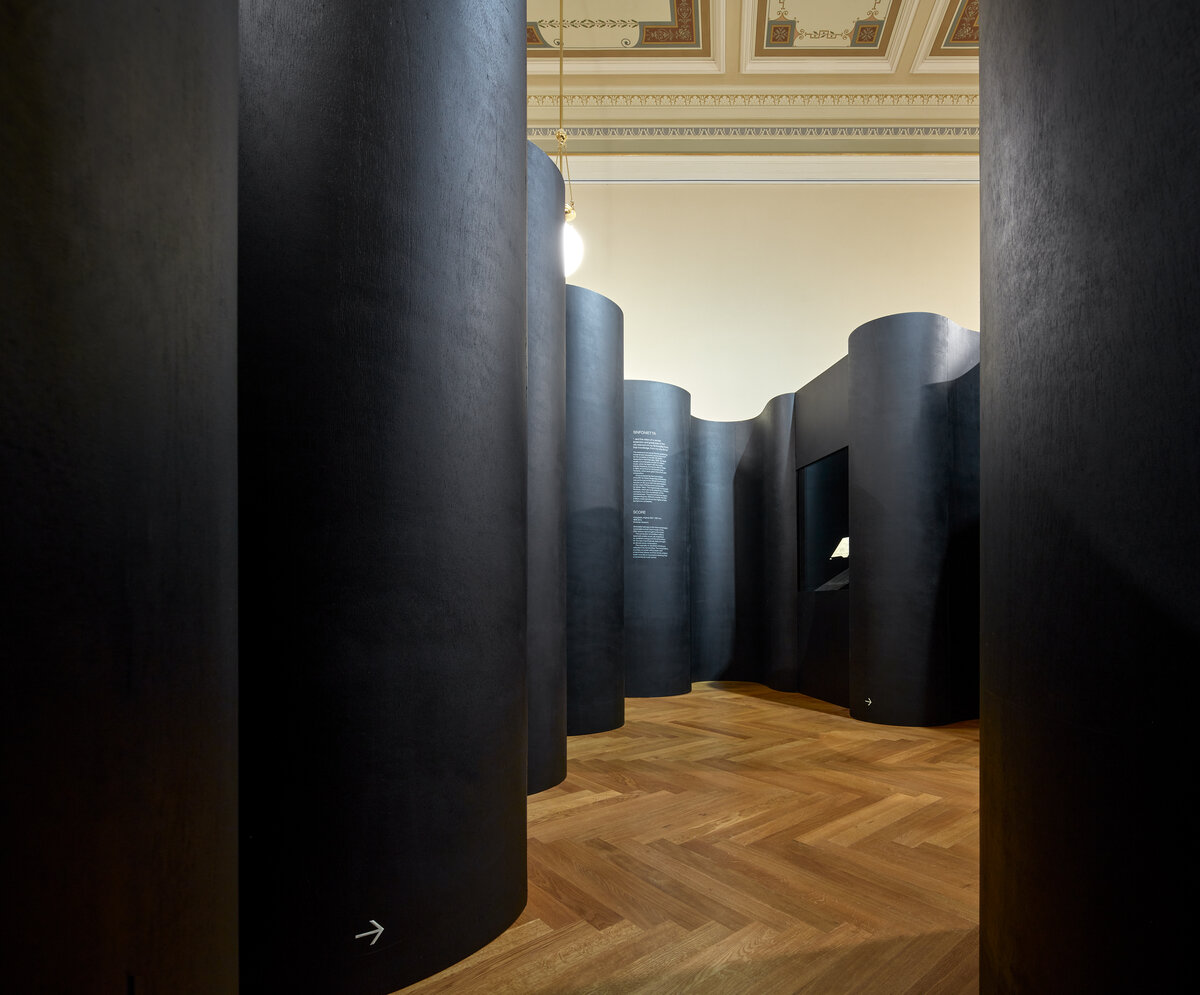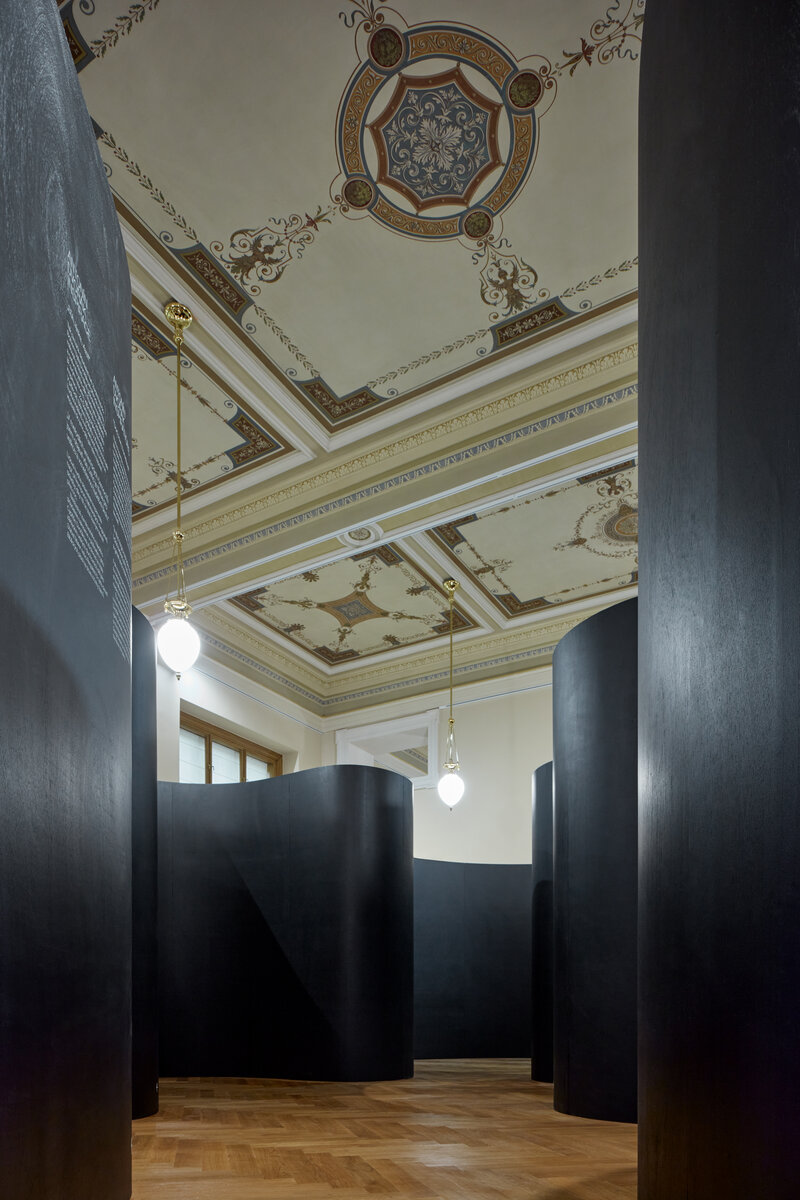| Author |
Ing.arch.Lenka Hejlová, Ing.arch.Martin Hejl, MgA. Bc. Jan Nálepa / KOLMO.eu |
| Studio |
|
| Location |
Národní muzeum, Václavské náměstí 1700/68, 110 00 Praha 1 |
| Investor |
Národní muzeum, Václavské náměstí 1700/68, 110 00 Praha 1 |
| Supplier |
Pink Productions s.r.o., Veverkova 23, 170 00 Praha 7
Loom on the Moon s.r.o., Heřmanova 829/14, 170 00 Praha 7
AVTgroup a.s., V Lomech 2376, 149 00 Praha 11-Chodov |
| Date of completion / approval of the project |
January 2021 |
| Fotograf |
|
Four composers. Four distinctive styles. Four life stories interconnected in four spatial installations. Each of them reflects crucial moments of the composers’ lives and work in a very unique way. Each of them presents a different spatial and sensual experience.
Once the visitor enters the first room, he finds himself in a room with colourful light music. He can intimately experience segments of Smetana’s Moldau, Dvorak’s Symphony No.9 in E minor "From the New World", Janacek’s Sinfonietta or Double Concerto for two string orchestras, piano and timpani by Bohuslav Martinu. Through this synergy of music and light the visitor walks into the next room.
The lives of the four composers are presented in a large-format novella hand painted on wood.
The fluid – but not random – perspective of the narrator keeps the visitor alert and relativizes the common truth.
To experience the patchwork of crucial moments from the composers’ lives the visitor enters an acoustic landscape that is filled with flashes of sounds which inspired the composers and also segments of their famous pieces. Each of theses four acoustic landscapes surprises the visitor with unexpected wall geometry and is ended with the highlight of the exhibit – the manuscript of the most famous piece.
Behind the wall made from the composers‘ personal items the visitor finds a unique room devoted to opera. The visitor becomes familiar with various scenic designs and productions of one opera throughout the centuries. We can see a different rendition of the famous Rusalka solo in opera houses from London to the Metropolitan Opera, New York.
Equipped with knowledge of the lives and inspiration of the four composers the visitor ends his walk through the exhibit in a room of colourful game of light and music. He can quietly meditate in the audio-visual area or dance between the lights and then on out of the exhibition.
In the first hall, visitors will get acquainted with selected fundamental works. They are conveyed through an immersive light and sound spatial installation consisting of a total of 208 LED RGB programmable lights and 8 sound channels. The choreography of the lights was created for each piece to facilitate the audience's perception of the musical work.
The hall is acoustically treated and completely blacked out with curtains that hug its entire perimeter.
In the other rooms, the exhibition is composed of several sections - Life, Inspiration and Masterpieces. Installed differently in the Treasury - a wooden box with internal meanders. The Treasury is loosely inserted into the halls of the Museum, permeating them and leading the viewer through the winding spaces of its inner meanders.
The perimeter of the Treasury is hand-painted with a novella depicting the life of the composers.
The inner meanders, made of bent plywood stretched over a milled structure, are then specific, offering a varied experience. Some are spacious, others winding, cramped canyons. The journey through is very intimately echoed by Inspirations - selected sound themes that are reproduced through built-in speakers.
Original autographs of Masterpieces' flagship works are the centerpiece of the exhibition. The autographs are among the most valuable items, they are displayed in a treasure trove-like fashion, separately at the end of the Inspiration Journey. The curve of the wall runs inside the display case, forming a back for the adjustment of the autograph.
The smallest room, here the visitor finally meets the greats themselves. Each is given a separate portrait panel as well as a display case with peepholes. There is placed an artefact from the composers' lives. Thus we can see Martinů's children's shoes or Leoš Janáček's bowler hat.
Scene - a circular darkened space embedded in the square hall is embraced by an acoustic curtain. A projection on a separate acoustic wall presents various stage adaptations of famous operas.
Original costumes from these can be seen in cylindrical cases of bent glass.
The entire exhibition is designed to appeal to all of the visitor's senses. The bent stained wood leads the visitor through a space imbued with music, while the light installation translates famous musical passages into a visual spectrum. By inserting the Treasury into the historicizing space of the National Museum, we have achieved an unexpected spatial experience.
Green building
Environmental certification
| Type and level of certificate |
-
|
Water management
| Is rainwater used for irrigation? |
|
| Is rainwater used for other purposes, e.g. toilet flushing ? |
|
| Does the building have a green roof / facade ? |
|
| Is reclaimed waste water used, e.g. from showers and sinks ? |
|
The quality of the indoor environment
| Is clean air supply automated ? |
|
| Is comfortable temperature during summer and winter automated? |
|
| Is natural lighting guaranteed in all living areas? |
|
| Is artificial lighting automated? |
|
| Is acoustic comfort, specifically reverberation time, guaranteed? |
|
| Does the layout solution include zoning and ergonomics elements? |
|
Principles of circular economics
| Does the project use recycled materials? |
|
| Does the project use recyclable materials? |
|
| Are materials with a documented Environmental Product Declaration (EPD) promoted in the project? |
|
| Are other sustainability certifications used for materials and elements? |
|
Energy efficiency
| Energy performance class of the building according to the Energy Performance Certificate of the building |
|
| Is efficient energy management (measurement and regular analysis of consumption data) considered? |
|
| Are renewable sources of energy used, e.g. solar system, photovoltaics? |
|
Interconnection with surroundings
| Does the project enable the easy use of public transport? |
|
| Does the project support the use of alternative modes of transport, e.g cycling, walking etc. ? |
|
| Is there access to recreational natural areas, e.g. parks, in the immediate vicinity of the building? |
|



